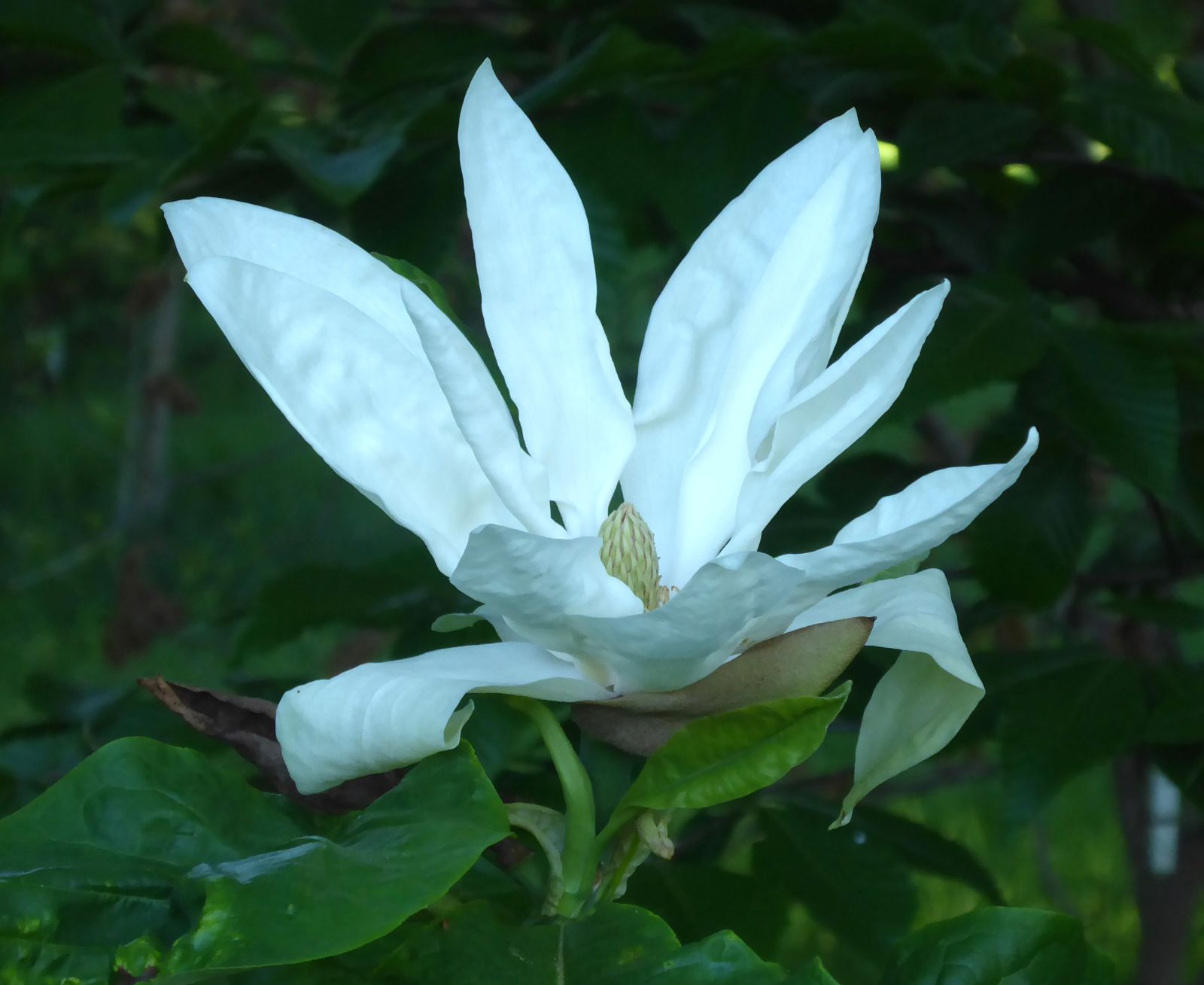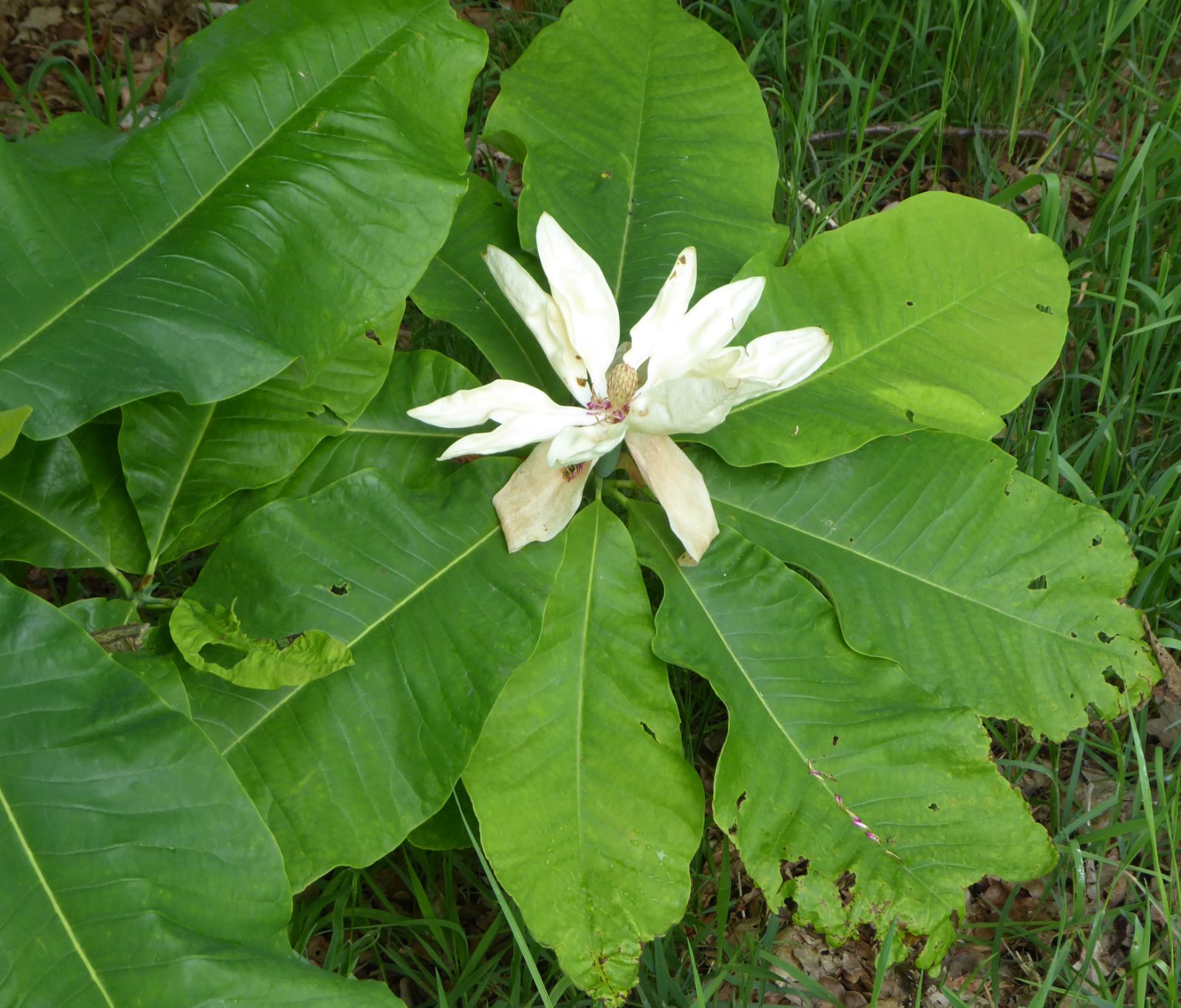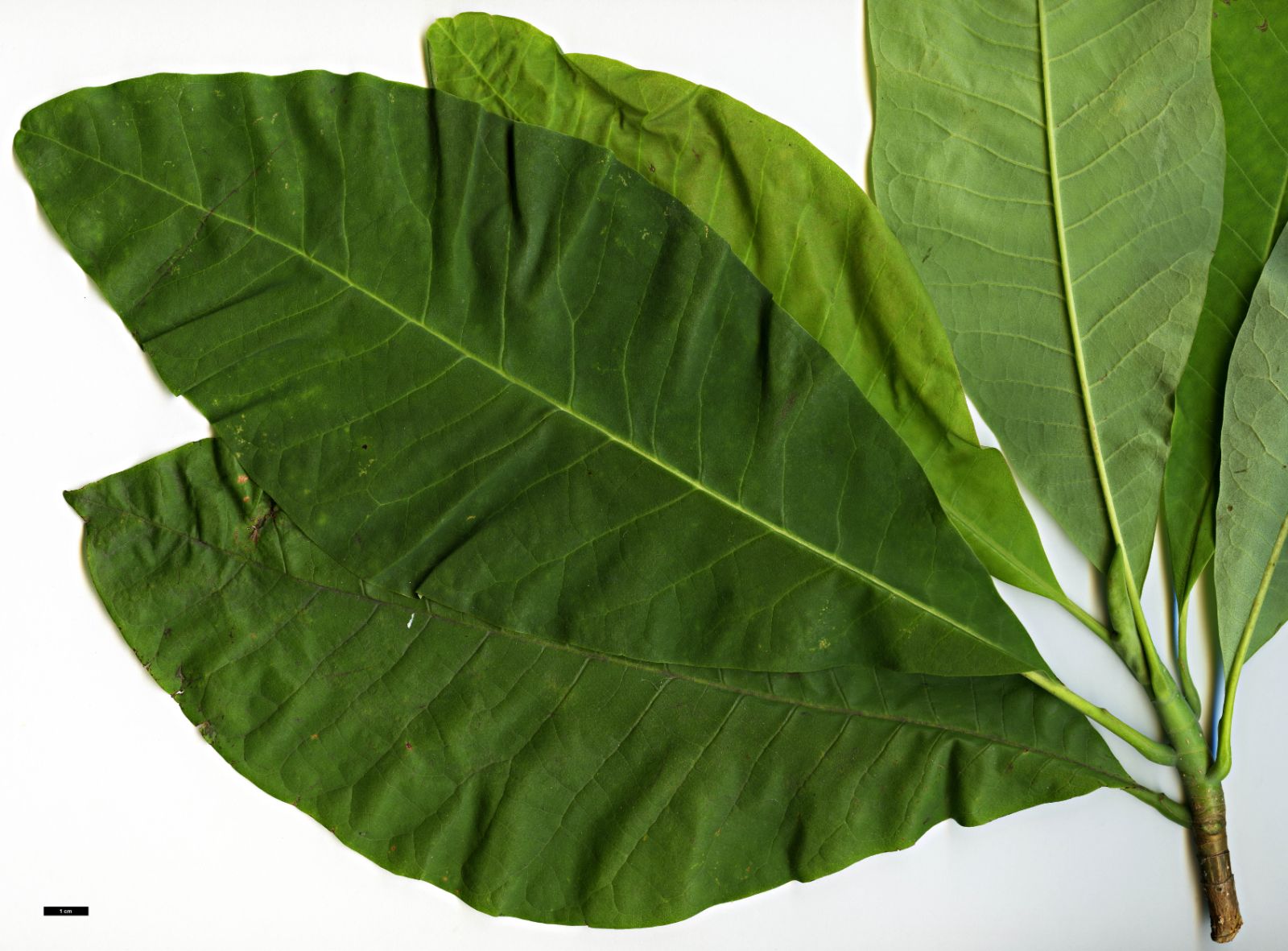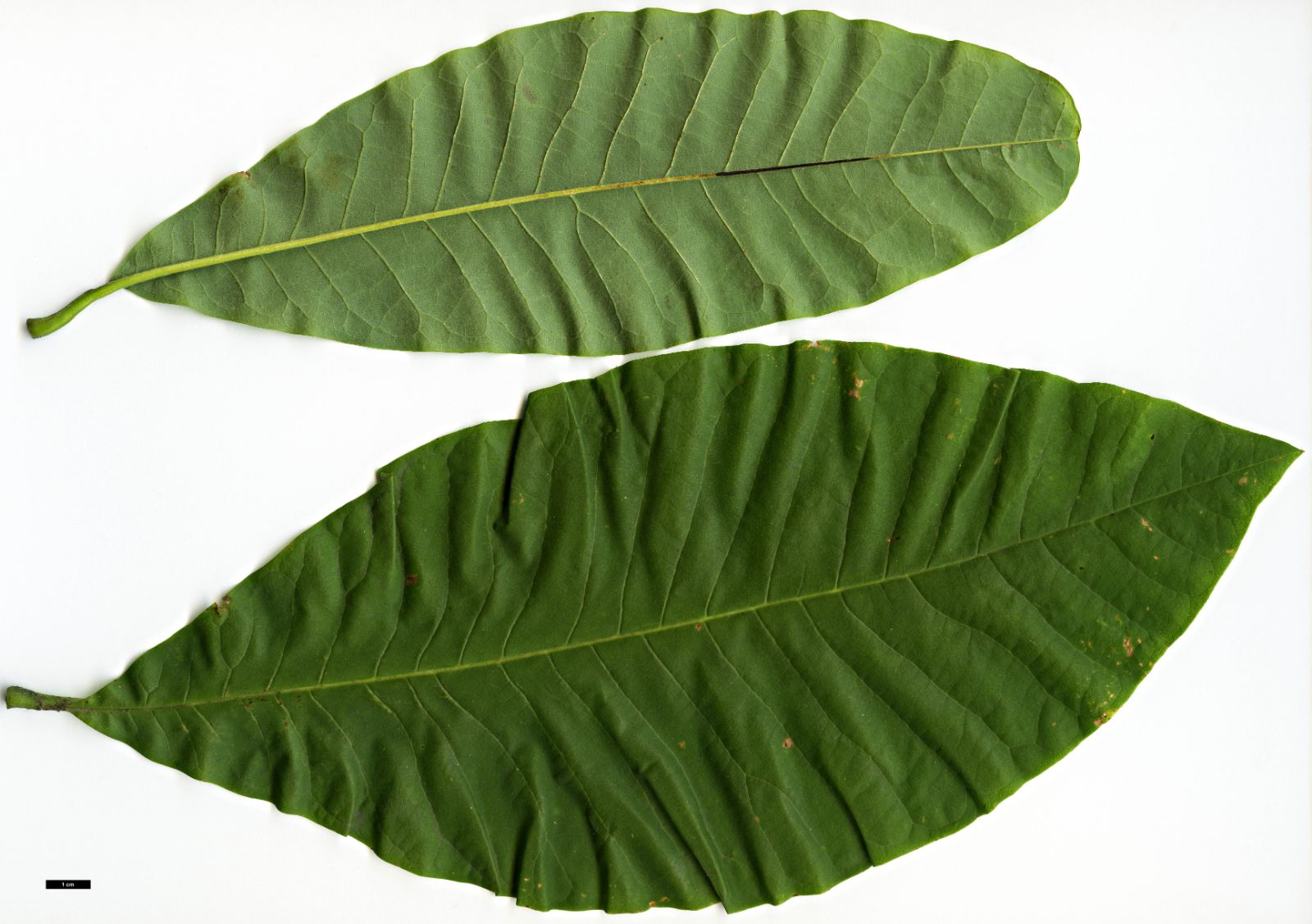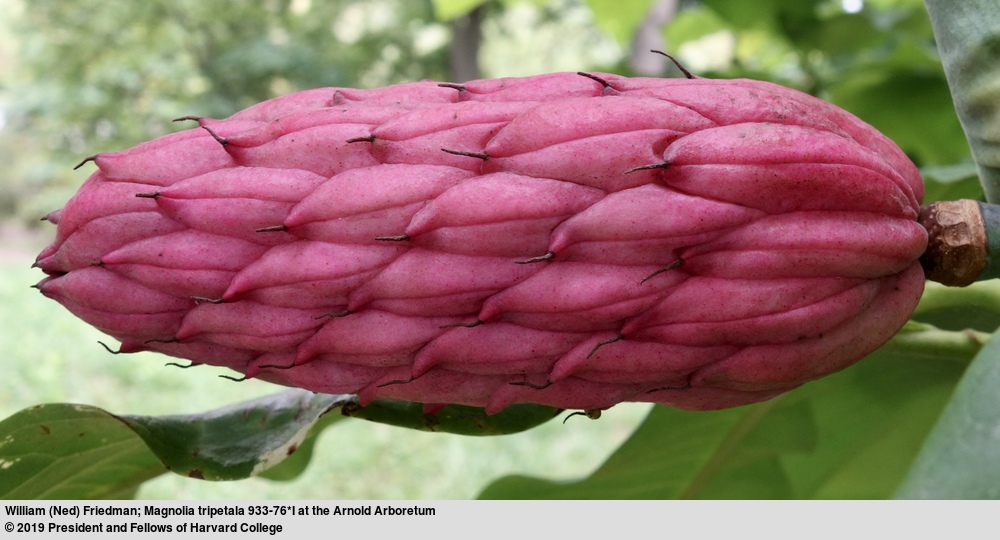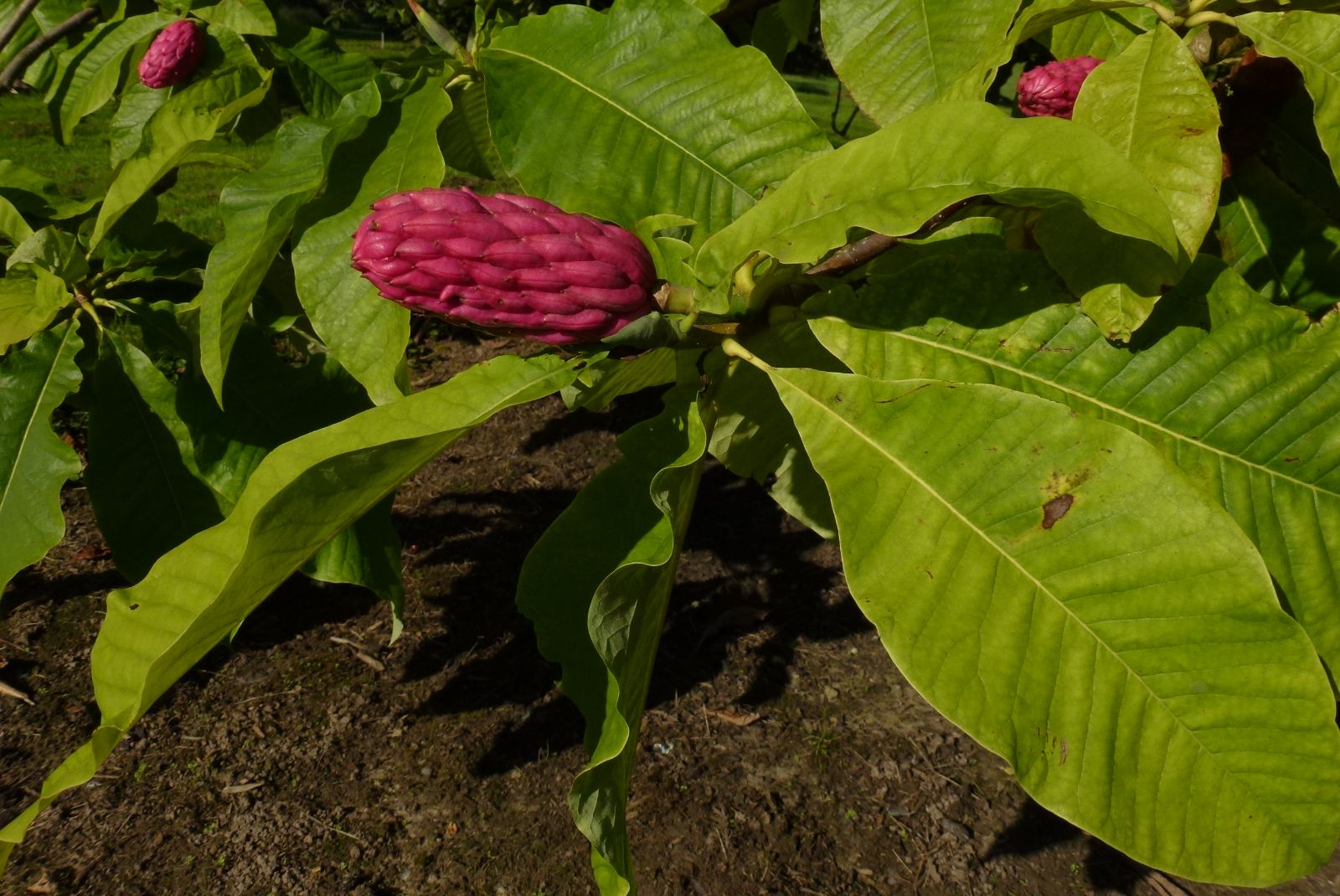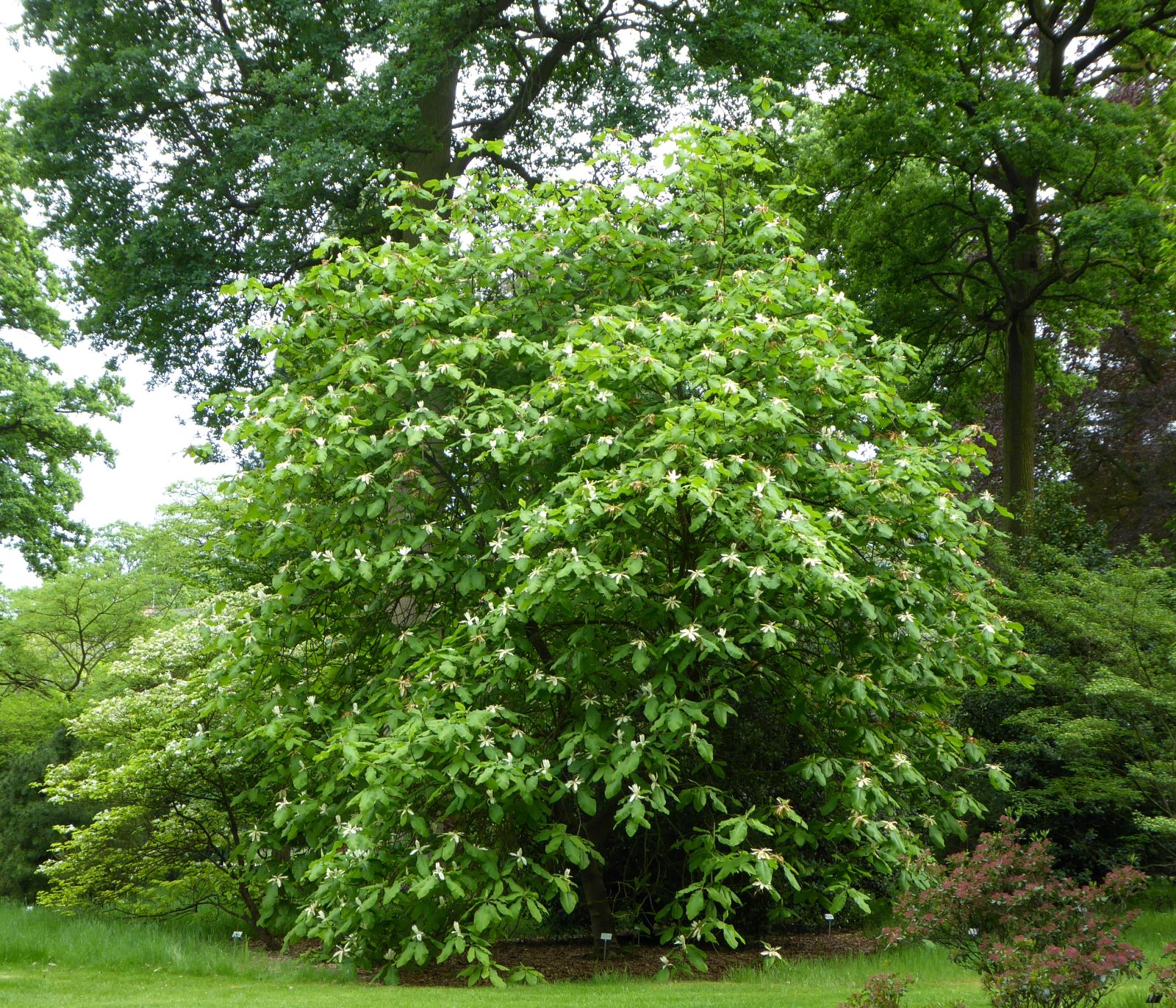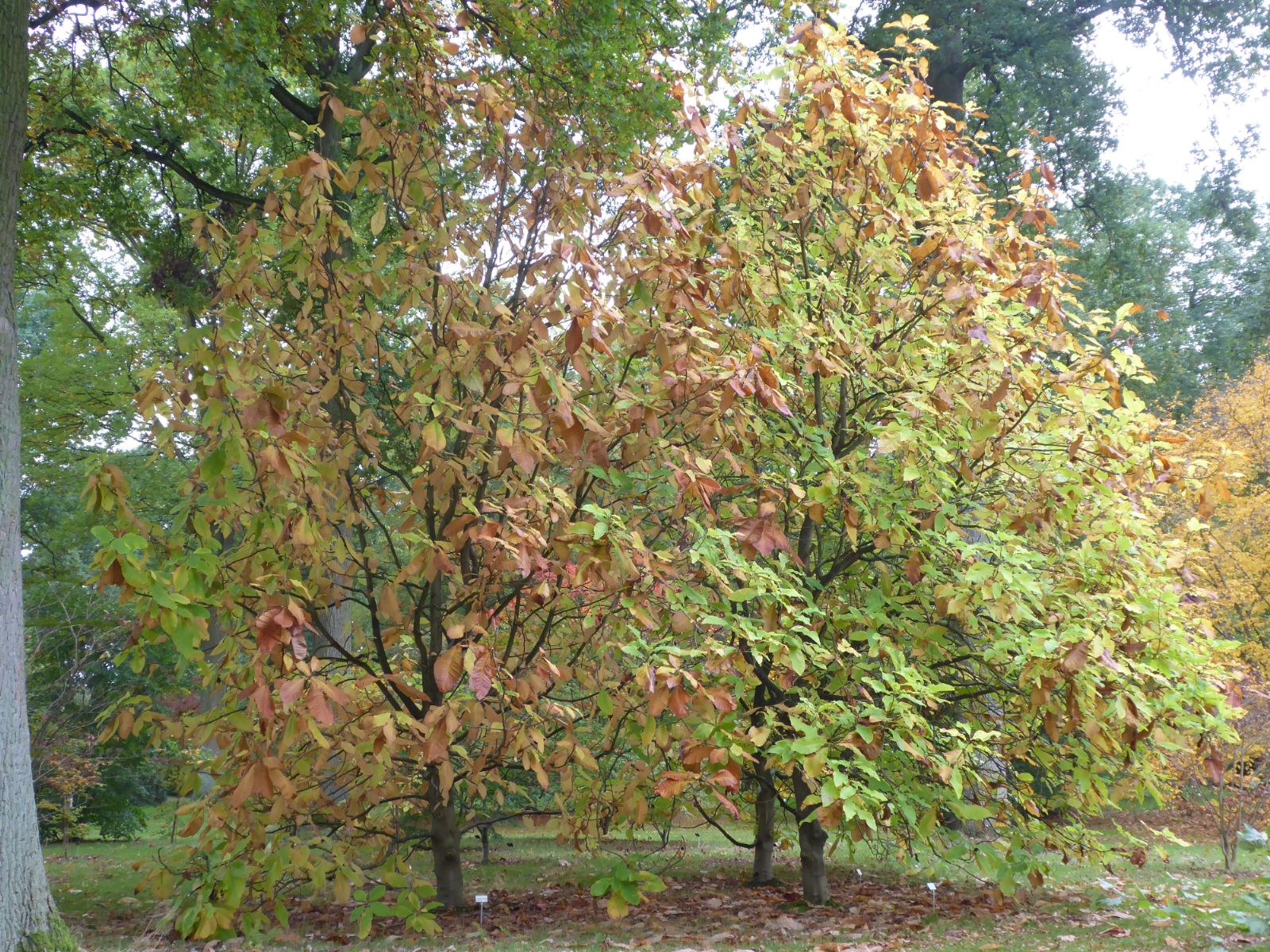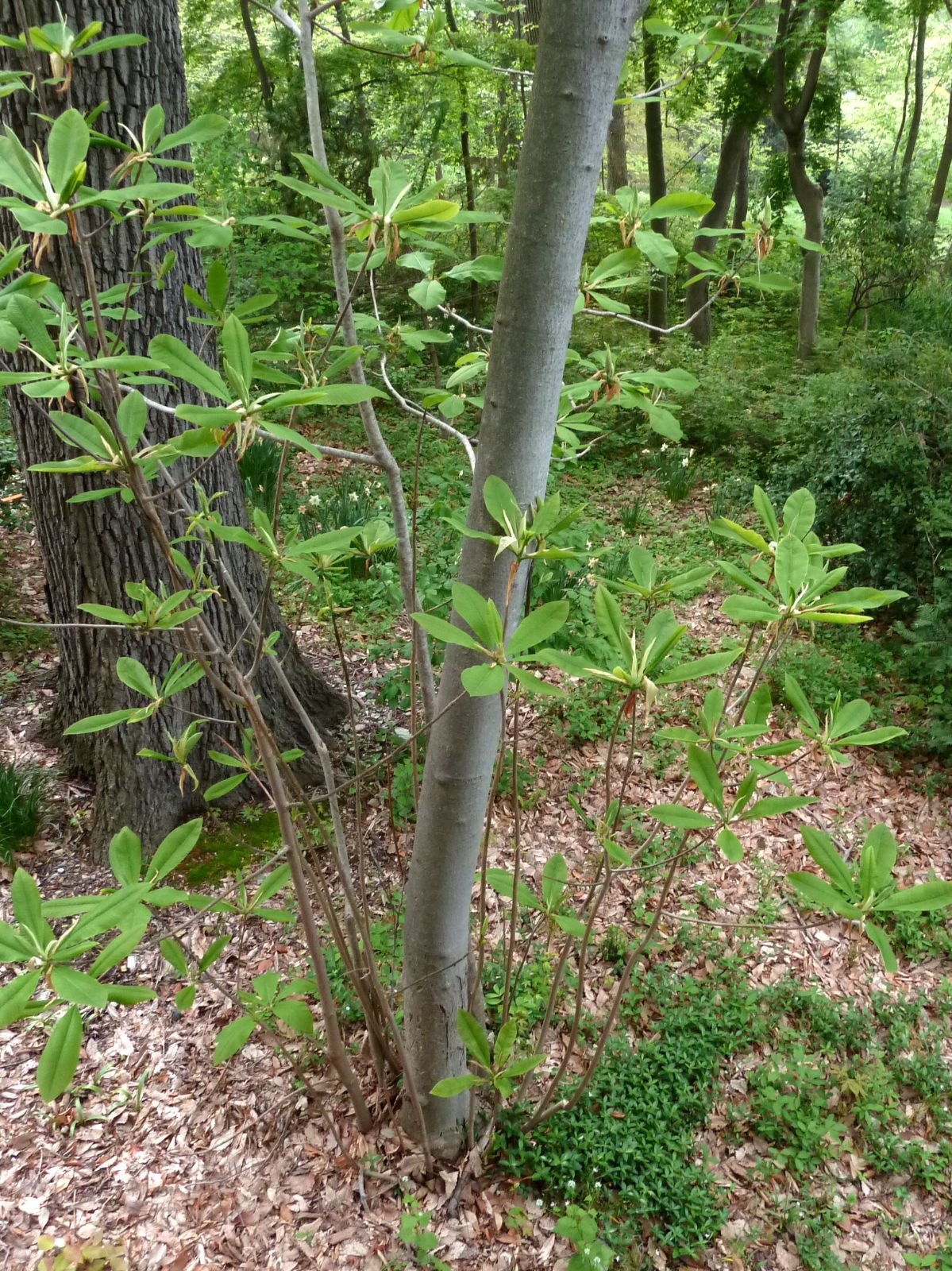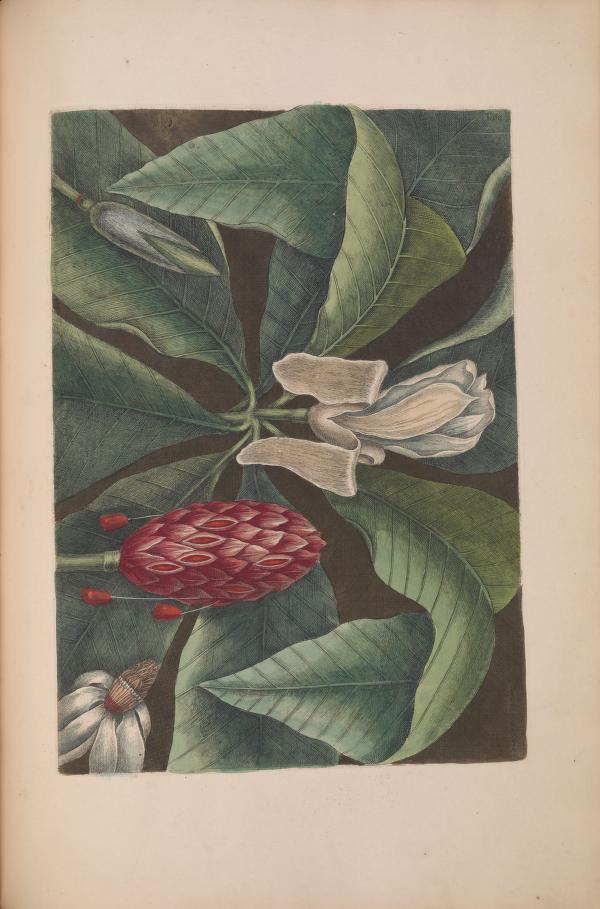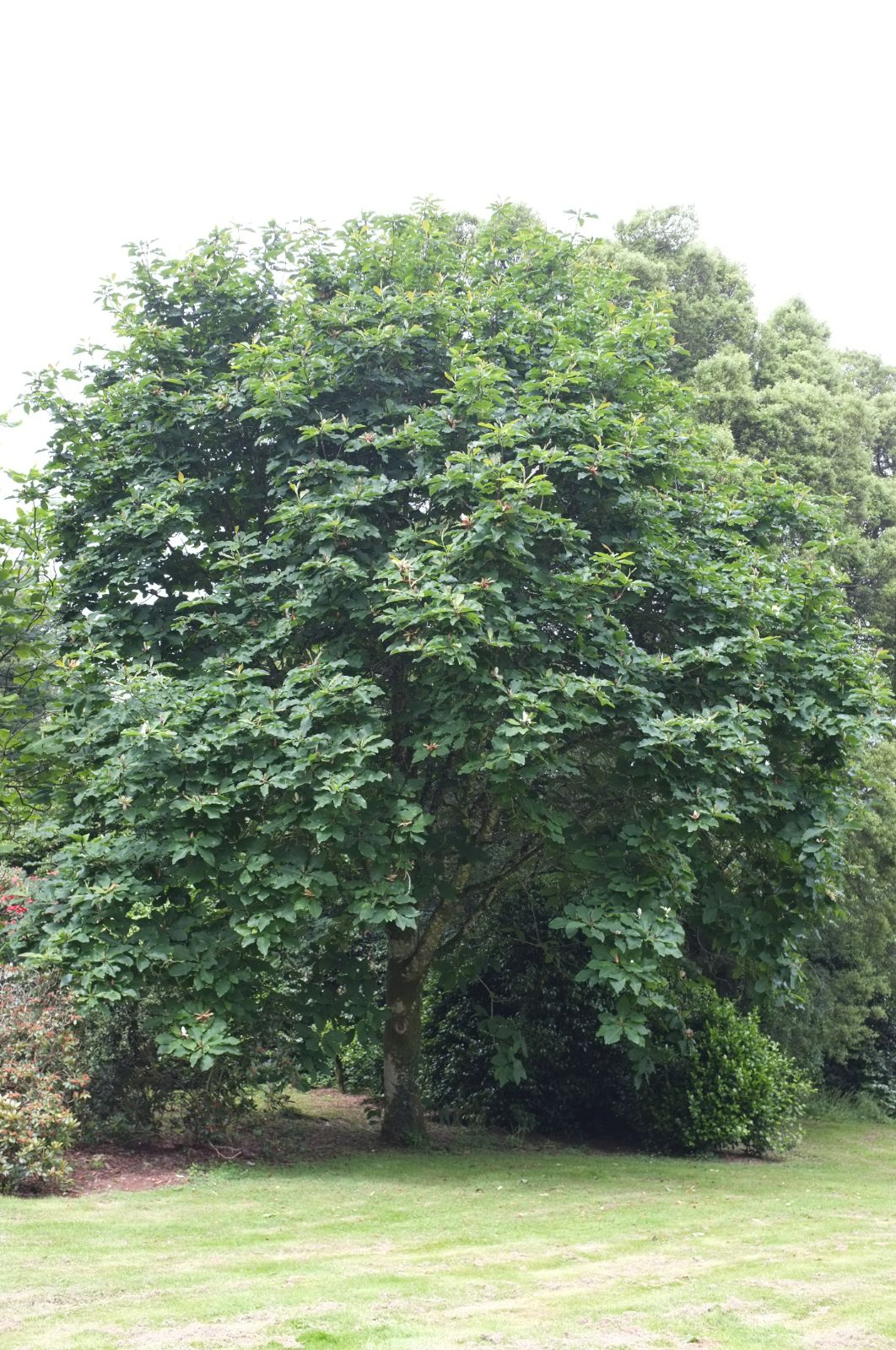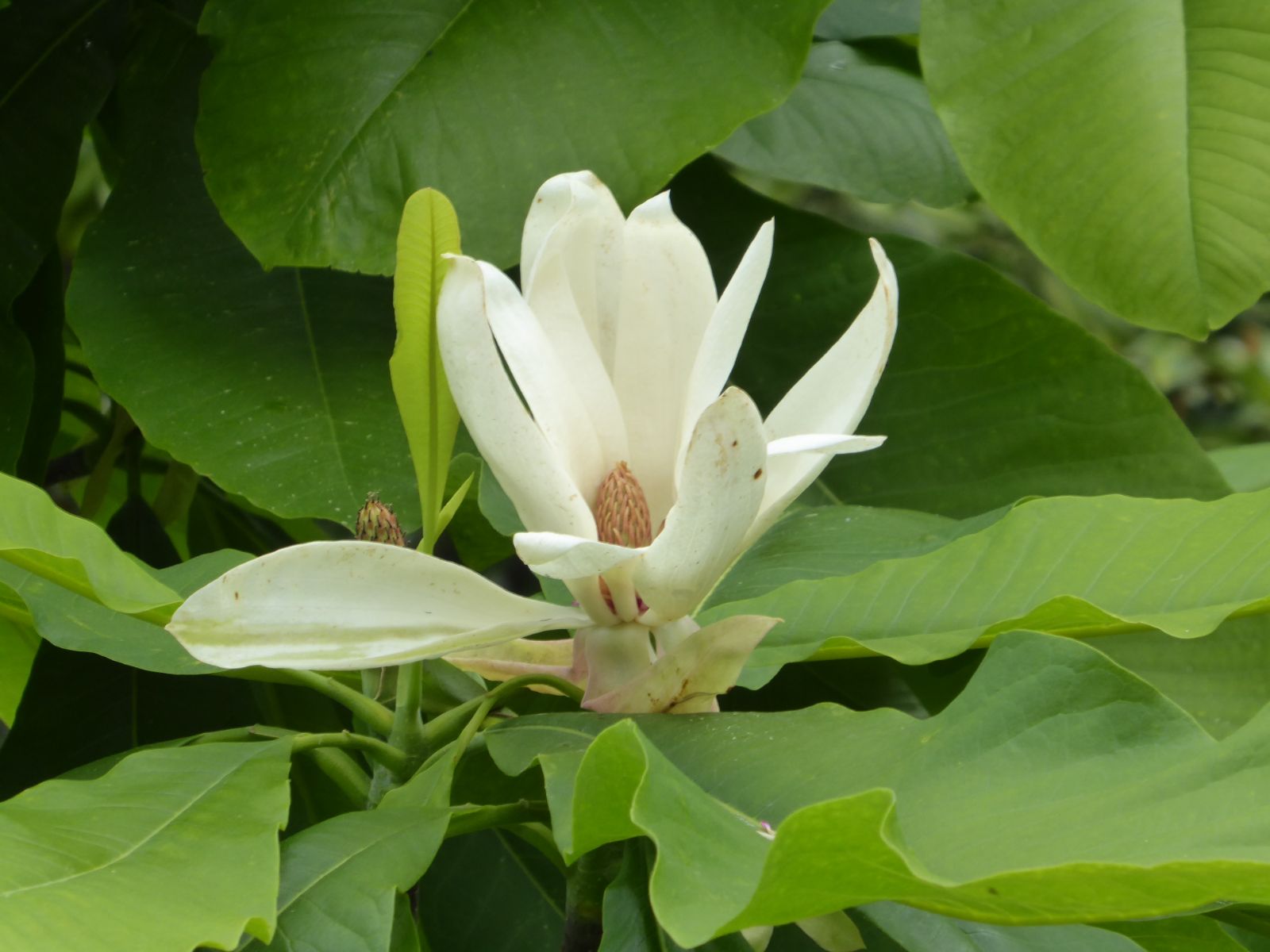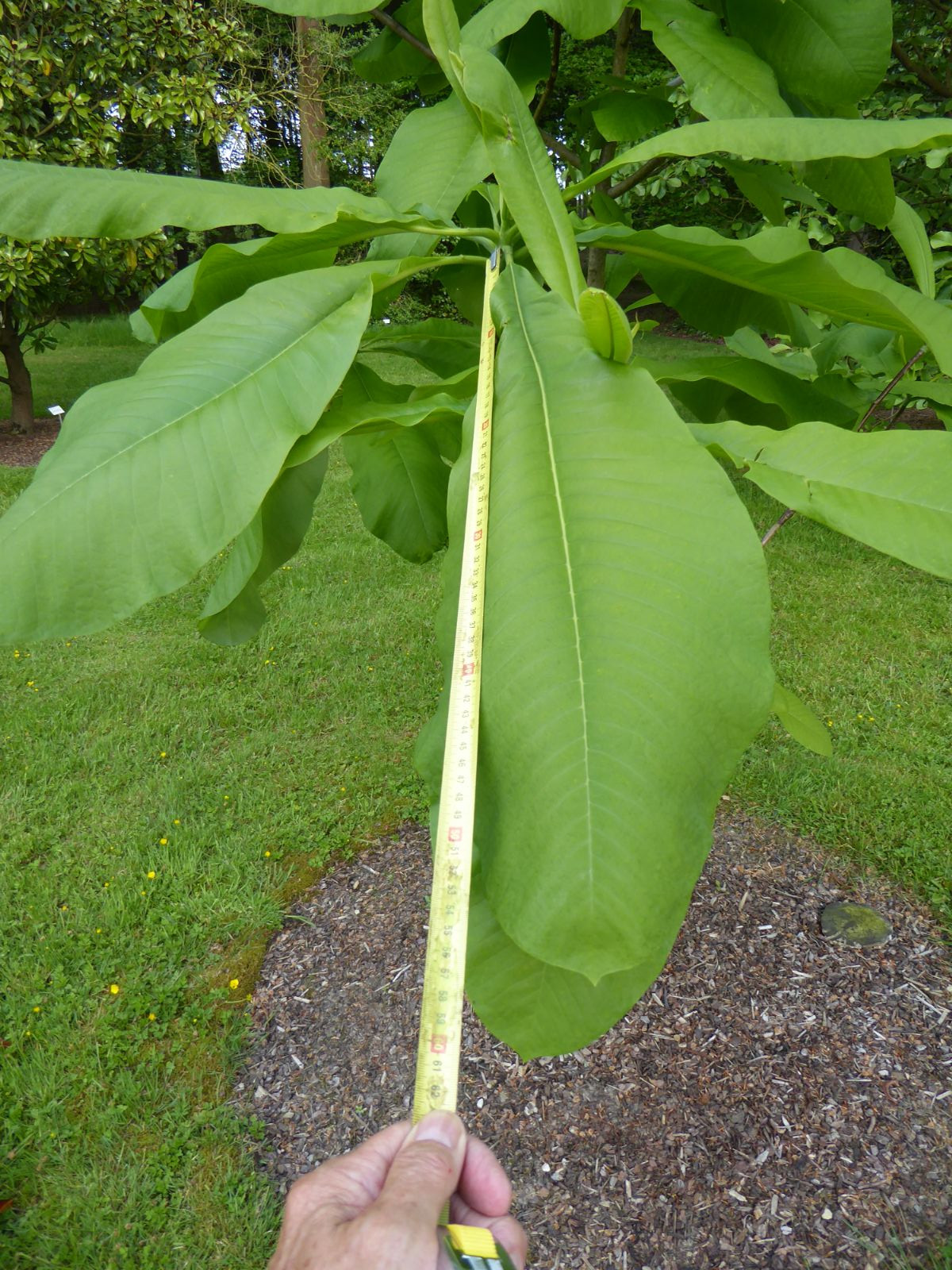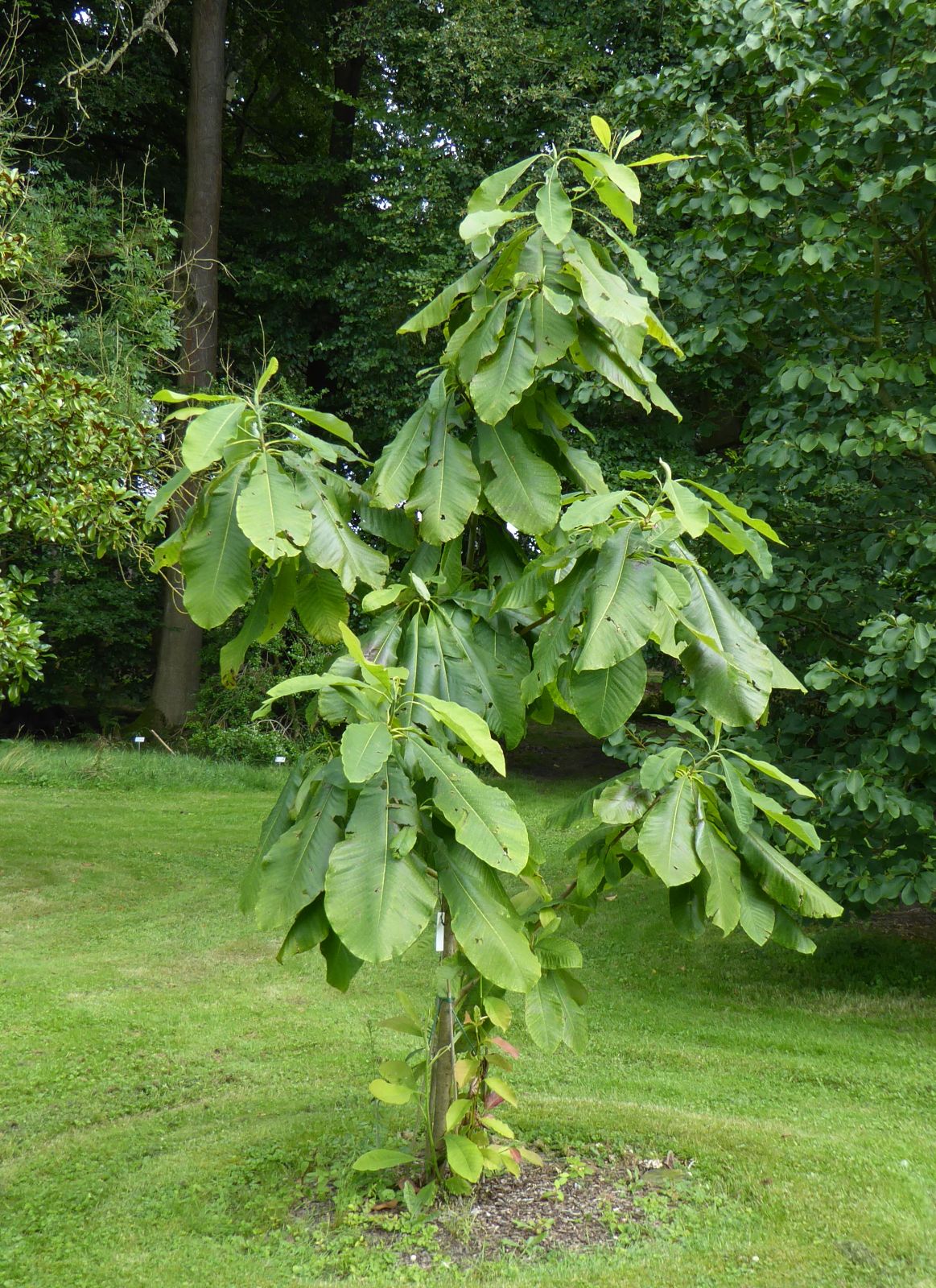Magnolia tripetala
Sponsor
Kindly sponsored by
The Roy Overland Charitable Trust
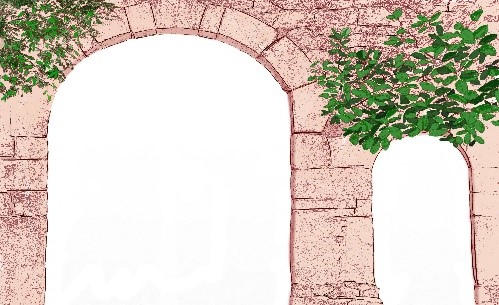
Credits
Julian Sutton (2022)
Recommended citation
Sutton, J. (2022), 'Magnolia tripetala' from the website Trees and Shrubs Online (treesandshrubsonline.
Genus
- Magnolia
- Section Rhytidospermum
Common Names
- Umbrella Tree
- Umbrella Magnolia
Synonyms
- Magnolia umbrella Desrouss.
Infraspecifics
Other taxa in genus
- Magnolia acuminata
- Magnolia × alba
- Magnolia amabilis
- Magnolia amoena
- Magnolia aromatica
- Magnolia biondii
- Magnolia × brooklynensis
- Magnolia campbellii
- Magnolia cathcartii
- Magnolia cavaleriei
- Magnolia caveana
- Magnolia champaca
- Magnolia changhungtana
- Magnolia chapensis
- Magnolia compressa
- Magnolia conifera
- Magnolia Cultivars A
- Magnolia Cultivars B
- Magnolia Cultivars C
- Magnolia Cultivars D
- Magnolia Cultivars E
- Magnolia Cultivars F
- Magnolia Cultivars G
- Magnolia Cultivars H–I
- Magnolia Cultivars J
- Magnolia Cultivars K
- Magnolia Cultivars L
- Magnolia Cultivars M
- Magnolia Cultivars N–O
- Magnolia Cultivars P
- Magnolia Cultivars Q–R
- Magnolia Cultivars S
- Magnolia Cultivars T
- Magnolia Cultivars U–V
- Magnolia Cultivars W–Z
- Magnolia cylindrica
- Magnolia dandyi
- Magnolia dawsoniana
- Magnolia de Vos and Kosar hybrids
- Magnolia decidua
- Magnolia delavayi
- Magnolia denudata
- Magnolia doltsopa
- Magnolia duclouxii
- Magnolia ernestii
- Magnolia figo
- Magnolia floribunda
- Magnolia × foggii
- Magnolia fordiana
- Magnolia foveolata
- Magnolia fraseri
- Magnolia fulva
- Magnolia globosa
- Magnolia × gotoburgensis
- Magnolia grandiflora
- Magnolia grandis
- Magnolia Gresham hybrids
- Magnolia guangdongensis
- Magnolia hookeri
- Magnolia insignis
- Magnolia Jury hybrids
- Magnolia × kewensis
- Magnolia kobus
- Magnolia kwangtungensis
- Magnolia laevifolia
- Magnolia lanuginosa
- Magnolia leveilleana
- Magnolia liliiflora
- Magnolia × loebneri
- Magnolia lotungensis
- Magnolia macclurei
- Magnolia macrophylla
- Magnolia martini
- Magnolia maudiae
- Magnolia nitida
- Magnolia obovata
- Magnolia officinalis
- Magnolia opipara
- Magnolia × proctoriana
- Magnolia × pruhoniciana
- Magnolia rostrata
- Magnolia salicifolia
- Magnolia sapaensis
- Magnolia sargentiana
- Magnolia sieboldii
- Magnolia sinensis
- Magnolia sinica
- Magnolia sinostellata
- Magnolia × soulangeana
- Magnolia sprengeri
- Magnolia stellata
- Magnolia tamaulipana
- Magnolia × thomsoniana
- Magnolia × veitchii
- Magnolia virginiana
- Magnolia × wieseneri
- Magnolia wilsonii
- Magnolia xinganensis
- Magnolia yunnanensis
- Magnolia yuyuanensis
- Magnolia zenii
Deciduous tree or shrub, often multistemmed, to 15 m. Bark grey, smooth. Branchlets and foliar buds glabrous. Leaves crowded in terminal whorl-like clusters; stipules (4–)6.6–9.4(–10) × 2.6–3.7 cm, red-glandular beneath, sparsely hairy. Leaf blade thin, broadest near middle, elliptic-oblong to narrowly obovate, or oblanceolate, (10–)26–57(–70) × (7.2–)10–30 cm, base cuneate to long-tapered, apex long-acuminate to abruptly acute, rarely apiculate; lower surface densely hairy, especially on midvein; upper surface green, glabrous. Flowers in spring in the wild (late May–June, UK), malodorous, 5.5–11 cm across; spathaceous bracts 2, glandular beneath; tepals spreading, creamy white, outermost whorl sepaloid, reflexed, greenish; stamens 81–103(–115), 8–17 mm; filaments purple; carpels (45–)53–66(–73). Fruit cylindric to ovoid-cylindric, 6–10 × 2–3.5 cm; follicles long-beaked, glabrous. Seeds lenticular to nearly ovoid, 9–12 mm, aril deep pink to red. Diploid 2n=38. (Meyer 1997).
Distribution United States Centred on the Appalachian chain from Ohio and Pennsylvania southwards, with outliers west to Oklahoma, south to Florida and east to the Virginia coast
Habitat Rich woods and ravines, mainly in uplands, rarely on the coastal plain; 0–1065 m.
USDA Hardiness Zone 5-8
RHS Hardiness Rating H6
Conservation status Least concern (LC)
The most striking feature of this smaller, hardy species is its impressively large leaves clustered towards the shoot tips in false whorls, giving rise to the name Umbrella Tree (which has been in use since the 1700s at least). Many leaves emerge together in spring, separated by very short internodes, while later season shoot elongation produces long internodes (Figlar 1997). Multistemmed specimens are usual, making a broad, open crown with new upright shoots frequently shooting from near the base – it ‘seems always in doubt whether to be a shrub or a tree’ (Scott 1886).
Magnolia tripetala is distinguished from other large leaved American magnolias by its tapering leaf bases. Its closest relatives are the three East Asian species of Section Rhytidospermum, and it shares with them the habit of making false whorls at the ends of long shoots. However, it has shorter fruits than any of these, and foul smelling rather than fragrant flowers; the Asian species also tend to make larger trees. Of those, M. obovata and M. officinalis have smaller leaves, and while those of M. rostrata can approach the size of M. tripetala, only M. rostrata has reddish hairs on the leaf underside.
Being widepread in eastern North America, M. tripetala came early to scientific attention, being well described (under a Latin polynomial) and illustrated by Catesby (1743). Linnaeus’ potentially misleading specific epithet seems to refer to the three outer tepals which hang down from the flower, conspicuous in Catesby’s plate, which served as the Linnean type. The wood (bad-smelling when broken) is soft, spongy and easily broken, perhaps the reason why no Native American uses for the species are recorded (Moerman 2021). Grieve (1931) noted that ‘the bark, if chewed as a substitute for tobacco, is said to cure the habit’.
The creamy flowers are produced at the ends of leafy shoots; initially held upright like candles, the tepals soon splay open. Flowers appear rather sporadically, not necessarily a disadvantage since they smell foul, ‘almost unbearably goat-like’ if cut flowers are kept indoors (Treseder 1978). The flowers strongly emit methyl benzoate, although this is also true of the heavily but more pleasantly scented M. obovata (Azuma et al. 1997). Beetle-pollination has been suggested (Thien 1974) but thorough field studies seem to be lacking. The bright red fruits are perhaps the species’ best asset in the garden, Bean (1981) claiming it as the most handsome in fruit of any magnolia. Despite the its tropical look when in full leaf, it is very hardy. A sunny, sheltered site with humus-rich, moisture-retentive soil is ideal.
It was introduced to Europe in 1752, probably in a consignment sent by John Bartram to London plant enthusiast Peter Collinson for wider distribution in Britain. It flowered for Collinson in 1760 (Treseder 1978). At one time it was probably the most widely grown American magnolia in Britain (Bean 1981). Good specimens are well scattered across the country, as befits its hardiness. Examples include trees in Richmond Park, London (14 m × 84 cm, 2011) and at Rudding Park, a hotel near Harrogate, North Yorkshire (8 m × 96 cm, 2018), while there is a lovely, luxuriant specimen at Lanhydrock, Cornwall (12.5.m × 138 cm, 2016 – The Tree Register 2021).
This species is widely hardy in Western Europe, with specimens recorded as far north as southern Sweden (Gothenburg Botanical Garden 2021). Further east, it has been grown in Poland since the early 19th century, where they are regarded as marginally hardy but well able to regrow when damaged by extreme winters (Anisko & Czekalski 1991). A number of young trees are now established in southern Finland from an introduction made by Arboretum Mustila, perhaps the best ones growing against the wall of the Vanha Kirkko (Old Church) in central Helsinki (Arboretum Mustila 2021).
In North America, where it is commonly grown away from the coldest areas, water availability probably limits its planting in central parts of the continent as much as winter cold. Dirr (2009) noted some tip dieback in Maine. The current American champion in New Haven Co., CT measures a monstrous 21 m × 333 cm (American Forests 2021).
Within Section Rhytidospermum, M. tripetala has hybridized with M. obovata to give M. × pruhoniciana. More distant hybrids include M. × thomsoniana (with M. virginiana) as well as the cultivars ‘Charles Coates’ and ‘Ginter Spicy White’.
'Bloomfield'
Large flowers, reported to be of dinner-plate size, with up to 16 tepals; leaves exceptionally large and thick, to 70 × 30 cm. Selected by Phil Savage, MI from seed of Pennsylvanian origin; registered 1974.
'Woodlawn'
Fruiting cones very large, to 12.5 × 5 cm, bright red; flowers large. Selected by Joe McDaniel, the original growing in Woodlawn Cemetery, Urbana, IL; registered 1974.

